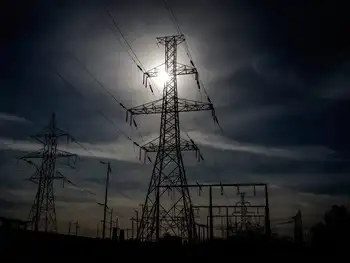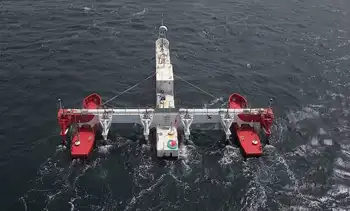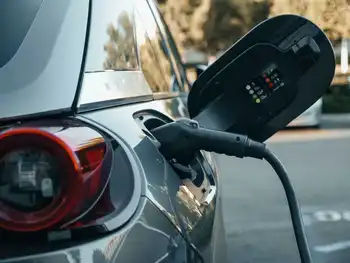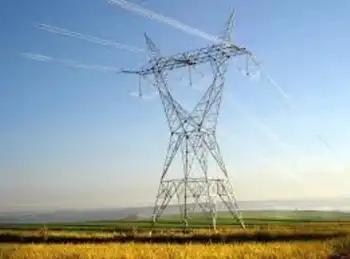Reviving the AC/DC debate
By EE Times
High Voltage Maintenance Training Online
Our customized live online or in‑person group training can be delivered to your staff at your location.

- Live Online
- 12 hours Instructor-led
- Group Training Available
You'll recall that it started back when Thomas Edison promoted direct current power generation while Nikola Tesla invented a relatively simple AC induction motor and advocated an alternating current distribution system.
At the Ceatec Japan show here, Sharp showed what the company calls its "DC Eco House," a concept illustrating carbon-neutral living.
Sharp created a miniature house equipped with crystalline solar modules on its roof, generating power in DC, which can be directly distributed throughout the house to power up "the next-generation" refrigerator, air conditioner, LCD TVs and power LED lights, all featuring a DC input.
Similarly, TDK promoted a partly DC-powered "eco home," anticipating a combination of clean energies, such as solar and wind power, and conventional commercial electricity.
The TDK mock-up showed a flow of energy from multiple energy sources not only to the home but throughout the home, with Home Energy Management System installed inside the home.
Both companies are advocating foregoing multiple conversions of DC-to-AC and AC-to-DC. They believe such a step will prevent energy losses by up to "several percent."
They are asking: Isn't it about time for DC power delivery systems to replace, or at least augment, the current AC distribution system at home?
Some active discussions are already taking place in the United States to promote the use of DC power in facilities such as datacenters.
What's new at Ceatec, a Japanese consumer electronics show, is that the similar debate now includes power to the home.
A Sharp spokeswoman stressed that the company is not being naive. "We understand that proposing a DC infrastructure is a bold move. It affects power companies' business, it asks for alterations in power transmission cables, and it demands big changes in every home appliance now equipped with an AC input," she said.
But Sharp thinks it's time to start exploring enabling technologies capable of supplying constant and stable DC electricity power.
She said, "Today, the power generated by solar cells needs to be converted into AC, before it's sent to the grid. The power, transmitted from the grid back to home, needs to be converted to DC again, at every home appliance. We're introducing a lot of inefficiencies in our energy use."
It is a historical fact that Tesla won the argument as seen in today's utilities, which are designed to generate, transmit, and deliver electricity in the form of alternating current.
But the Japanese companies believe that fundamental premises for the original debate have become obsolete.
For its part, Edison, unable to improve his DC system, lost the battle, because in the 19th century, DC power generation was limited to a relatively low voltage potential and DC power could not be transmitted beyond a mile. Today, high-voltage direct current is a viable method of transmitting power over long distances.
But more importantly, they say, what if future homes do come with solar panels and they start generating their own power?
Further, they pointed out that many consumer electronics devices and appliances today already operate "internally" on DC power.
An official at TDK's booth noted, "Unlike old picture-tube TVs or washing machines of 20 years ago, a growing number of consumer devices today use DC, including PCs, LCD TV and portable devices like cell phones." This is because DC can be precisely regulated for sensitive components.
Neither Sharp nor TDK gave out exact figures — how much power is actually being wasted in the process of AC-DC conversions, except for saying "several percent." They said that each device and appliance is different.
While the proposal for DC power delivery systems may sound like pie-in-the-sky, both Sharp and TDK believe they can influence the debate, because they have technologies relevant to an eventual transition.
Sharp, armed with crystalline solar cells and LCD technologies, demonstrated a prototype of solar-powered LCD TV.
Calling it "off-the-grid TV," the Japanese company illustrated in its prototype how it's possible for a 52-inch LCD TV, consuming 220 kWh (kilowatt hour) per year (assuming a consumer watches TV 4.5 hours a day), can be powered by crystalline solar modules — measuring roughly 1 meter x 1.6 meters — capable of generating 220 Wh.
Similarly, TDK displayed the company's dye-sensitized solar cell technology, which can now be applied to flexible cells. TDK also showed: DC-to-DC power modules, essential for stable power supply; a two-way AC-to-DC converter, capable of converting surplus power back into AC, which is in development; and a Lithium ion battery for storing energy, also still in development.











